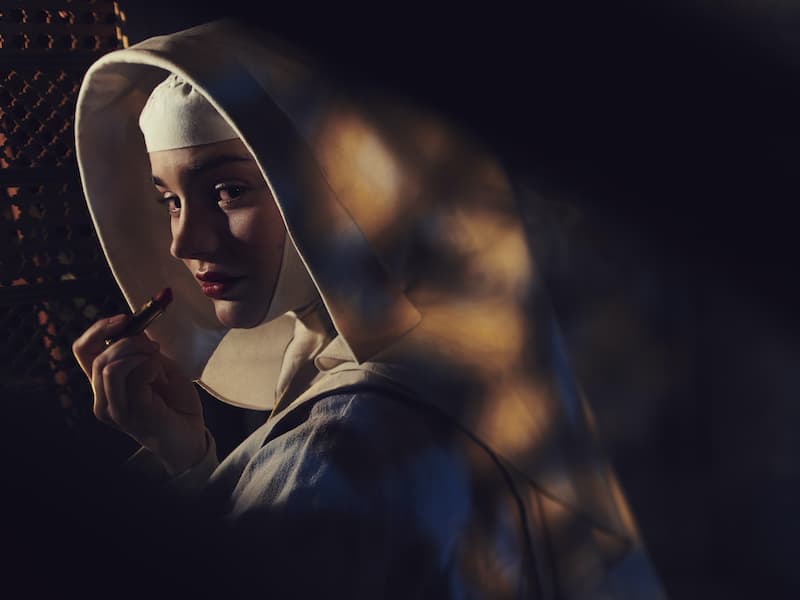Rebellious nuns, the suppression of desire, and a history of evil at a hilltop palace. Add these three things together and you get the story of Black Narcissus.
Michael Powell and Emeric Pressburger’s 1947 feature adaptation of Rumer Godden’s novel is an emblematic piece of filmmaking with incredible cinematography by Jack Cardiff topped off with a unique use of the Technicolor process.
The new FX miniseries version, while also visually stunning, is a much weaker telling of the story. Scripted by Amanda Coe and directed by A Quiet Place cinematographer Charlotte Bruus Christensen, this new adaptation ignores the history of colonialism in its setting and, unfortunately, contains numerous microaggressions as a result.
The year is 1934. England’s reign over India is growing weak, but the Church remains eager to establish missions and schools in rural locations tucked away in the Himalayas. A group of nuns led by Sister Claudaugh (Gemma Arterton) travels to an abandoned residence, known as the House of Women, a site long-rumored to be a place of supernatural and malicious activity.
Slowly, Sister Claudaugh’s judgment becomes tainted by her attraction to Mr. Dean (Alessandro Nivola), a rugged World War I veteran who enjoys his drink and sacrilegious ways. Her urge for sexual attention reawakens flashbacks of her own past behaviors, and the other sisters begin to notice. Is this the influence of their residence, though, or is there more going on that has yet to be discovered?
While Arterton’s performance as Sister Claudaugh demonstrates a difficult level of control and stoicism, it is Aisling Franciosi (The Nightingale) as Sister Ruth who is truly haunting. This thrilling character is without a doubt the best part of the new Black Narcissus. While the original film shows her more as a weak link among her sisters, this reimagined Sister Ruth explores, in greater depth, the sinister spirit that surrounds the convent.
She finds within her a self-confidence that manifests when she openly flirts with Mr. Dean. The more she is seduced by the secular world and its embrace of the sort of urges a young person might have, the more her character blossoms into a sort of femme fatale, which is absolutely enchanting.
The psyches of the main characters appear as fully developed personalities, but the secondary characters, many of them persons of color, are one-dimensional. This is especially apparent in the storyline of the forbidden young love between the local general’s nephew, Dilip Rai (Chaneil Kular), and a beautiful orphan girl, Kanchi (Dipika Kunwar). Their caste difference makes their romance taboo, yet Black Narcissus does very little to explain this aspect, or really any aspect, of the culture. That being stated, the acting from Kular and Kunwar is phenomenal for the scripts they were given. I wanted to see more interactions between them.
Other instances throughout the three-episode miniseries show evidence of a colonial gaze. This makes sense, not only because the main characters are nuns from the Church of England, but also due to a lack of representation behind the camera. Perhaps if another version of Black Narcissus ever gets the green light, it could employ a full South Asian crew and be told from the locals’ point of view.
The Black Narcissus story has potential built into the very basis of its existence. But this version, despite being well-paced and well-acted, is a dud, relying on tropes and caricatures of the local citizens. Just watch the classic film version instead.

